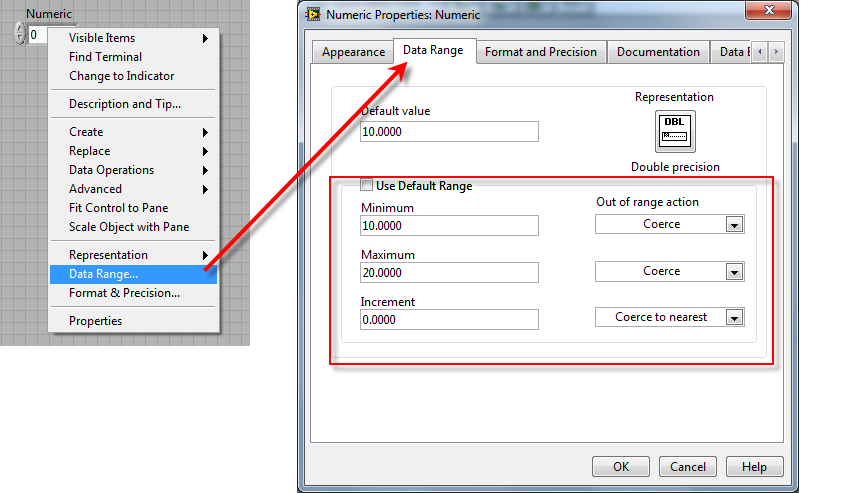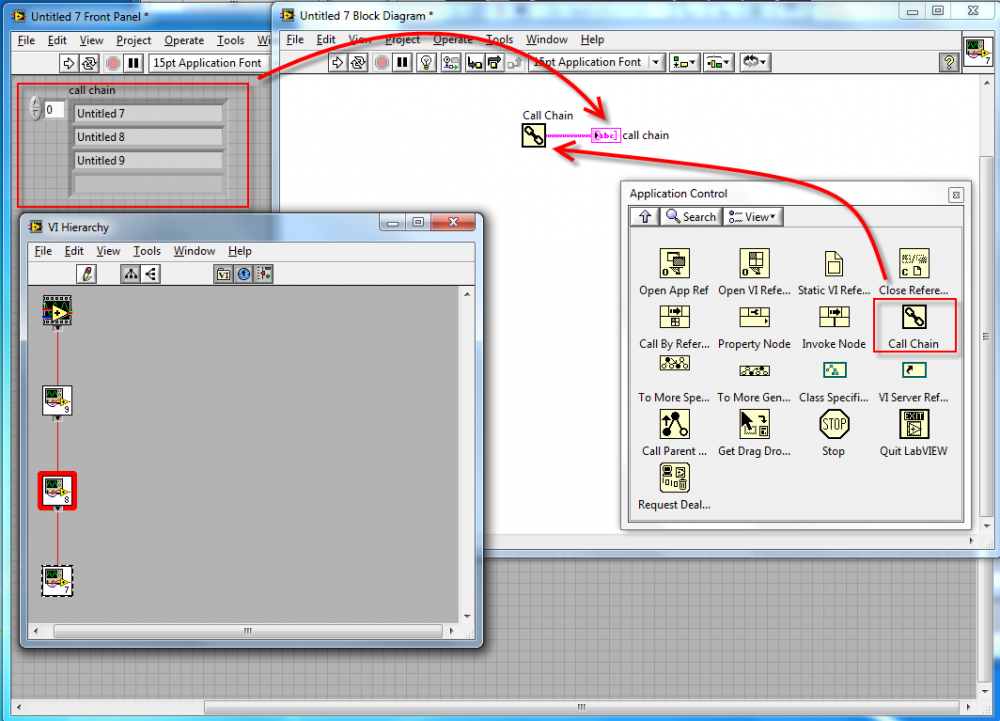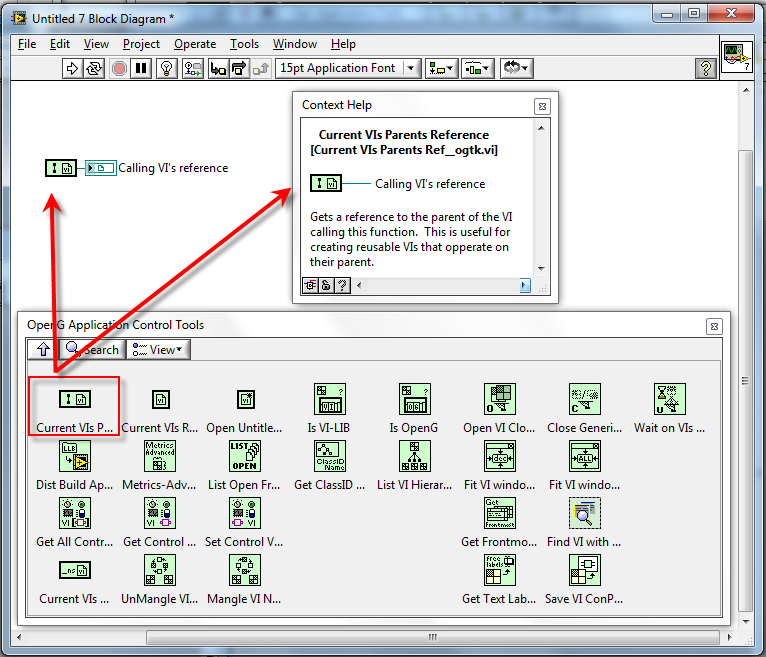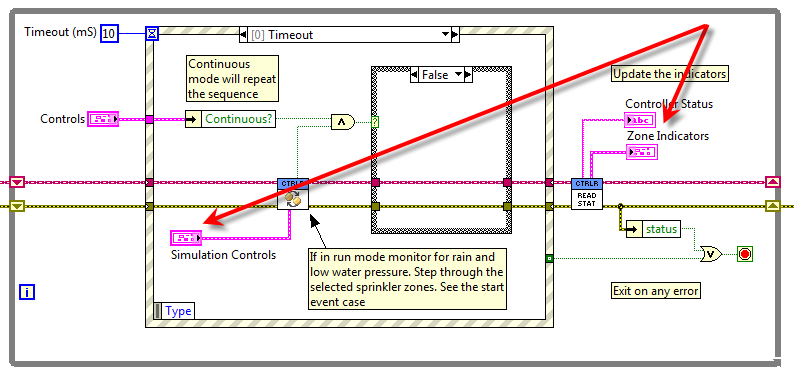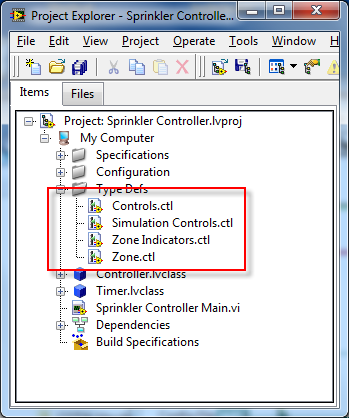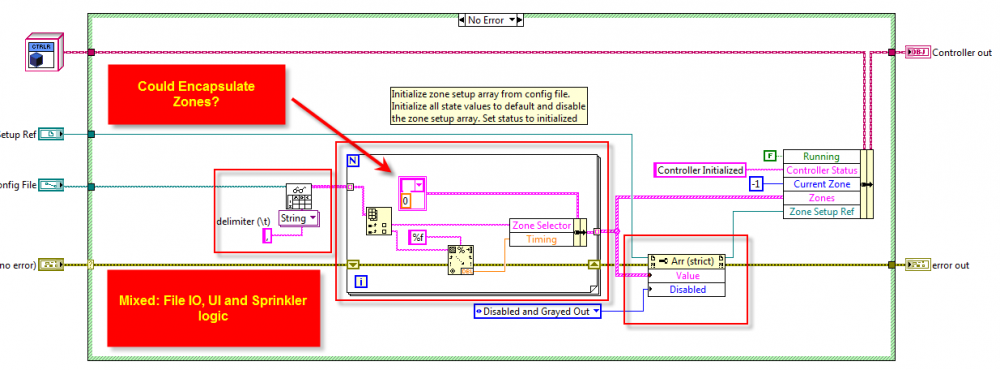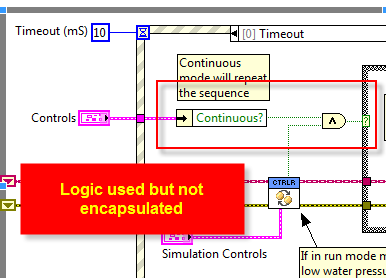Hi Steve
Firstly, this is just my opinion. Secondly, if it works - it works (so good job ) - but I always like to ask myself can it be done better?
So on that note, comparing your two posts, it feels that you have just used LVOOP for the sake of it.
As a result you have coupled your UI to the logic of your code.
I discussed this on the darkside here with respect to the CLD so I won't regurgitate it again, only to say that you mention that...
...yet you have used logic (nodes) on the top level BD which are not encapsulated.
Additionally, you have used typedefs that are not part of a Class, but which form an interface to your Class (i.e. public clusters) (private clusters is another topic for discussion when persisting data to disk not relevant to this one).
This is not always a bad thing, I do this for:
UI Classes where the role of the Class is to essentially take data and format it for display (but note there is always that distinction) - I do this as opposed to breaking out an X-Control when I don't need to.
Very Top Level Class which is just wrapping up all the Classes e.g. so method calls do not sit on the BD of a process\loop etc... - this is what I think you have done however, underneath it is still coupled.
Therefore, I think there is the opportunity to encapsulate more. However, given the size of the application it may be overkill, but would definitely be a good exercise.
I don't think LVOOP makes it more exciting, perhaps using LabVIEW 8.6 instead of 2010 was a better idea this time to cover more reviewers? Although I prefer LVOOP when programming day-to-day, I ended up using a more traditional approach for the CLD given the nature of the question\solution, time available etc...
Cheers
-JG



